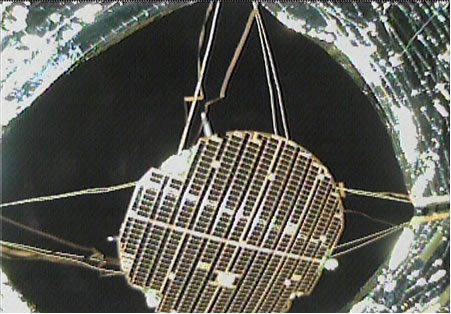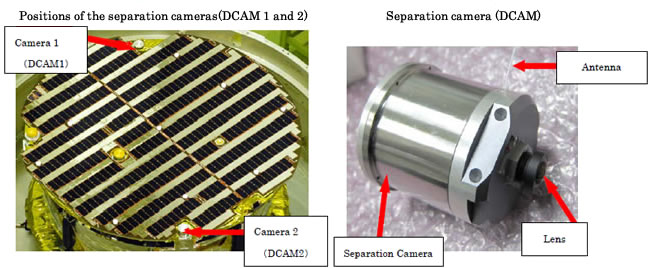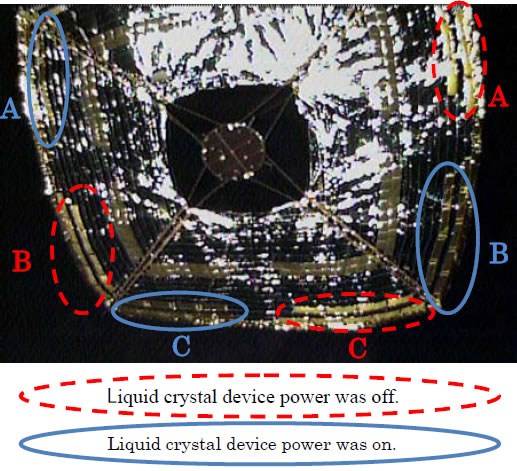Small Solar Power Sail Demonstrator 'IKAROS'
Successful Image Shooting by the Second Separation Camera
Japan Aerospace Exploration Agency (JAXA)
The Japan Aerospace Exploration Agency (JAXA) took images of the deployed solar sail of the Small Solar Power Sail Demonstrator "IKAROS" by the second separation camera*1 on June 19, 2010 (Japan Standard Time, JST) and transmitted and confirmed the data over the next few days. During our image data confirmation process, we also made sure that the liquid crystal device*2, which is the engineering mission equipment, was also working properly.
The IKAROS was launched on May 21, 2010 (JST), from the Tanegashima Space Center.
We will continue to measure the power generation status of the thin film solar cells attached to the sail, and will verify acceleration by photon pressure and orbit control by their acceleration.?Through these activities, we will ultimately aim at acquiring navigation technology through the solar sail.
*1: The separation camera is in a cylindrical shape of about 6 cm both in diameter and height. It is detached from the satellite using a spring to take images and send them to the satellite through radio waves. The camera will never return to the satellite to be attached again. The camera detached this time was the separation camera 1 (DCAM1) and the camera separated last time was the separation camera 2 (DCAM2.) For image shooting by the cameras, please refer to the computer graphics on the following site.
http://www.jaxa.jp/countdown/f17/overview/ikaros_e.html
*2: A liquid crystal device is a thin film device whose reflection characteristics on the surface change by turning on and off the power. It is experimental equipment to control the sail attitude only by solar light pressure without using fuel.
*3 When the power is on, sunlight makes specular reflections, and, when the power is off, it makes diffuse reflections. Consequently, when it is off, images become whiter. During the scheduled attitude control experiment, we will turn the power on and off in sync with the sail spin, but in the separation camera experiment this time, we switched the power on and off alternately to clearly see the difference. Thanks to the light conditions, you can easily see the difference between each of the solid blue circles A, B, and C, versus red dot circles A, B, and C.
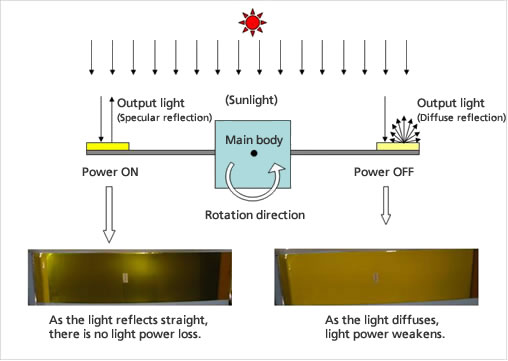
IKAROS Membrane
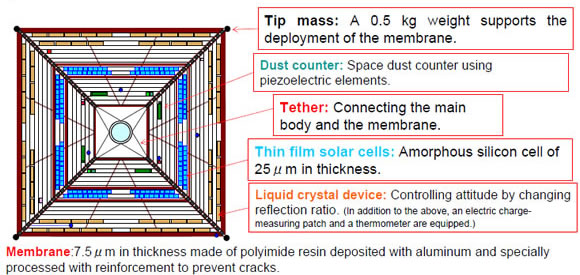
|
|
